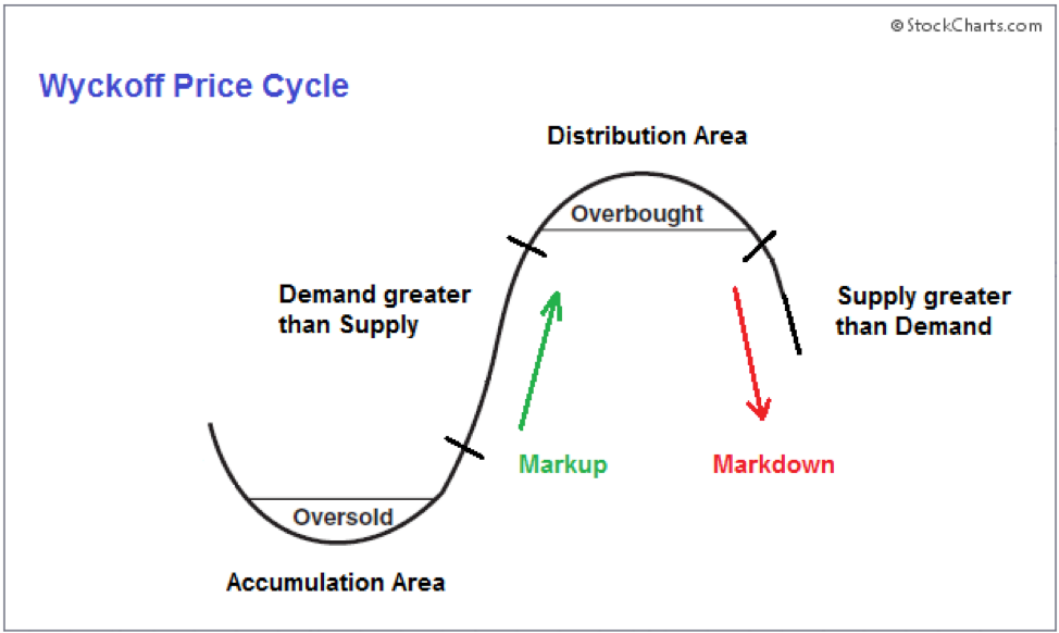Table of Contents
The financial markets operate in cycles, with periods of accumulation, markup, distribution, and markdown. Traders and investors who understand these cycles can better anticipate price movements and improve their trading strategies. One of the most powerful reversal patterns in market structure is the “Spring.” This article explores its significance, and how traders can use it to identify lucrative trading opportunities.
What is a Spring in Market Structure?
A Spring occurs when the market attempts to break lower but fails, leading to a swift price reversal accompanied by higher volume. This price action often traps sellers who expected a breakdown, resulting in a rapid move to the upside. It typically occur near significant support levels and signal the potential beginning of an uptrend.
Characteristics of a Spring:
- Break Below Support: Price temporarily dips below a key support level, creating an illusion of a breakdown.
- Failure to Continue Lower: Instead of following through with bearish momentum, the price quickly reverses.
- Increase in Volume: The reversal is accompanied by a surge in volume, indicating strong buying interest.
- Trap for Weak Hands: Traders who short the breakdown get trapped as the price reverses, leading to a short squeeze.
- Momentum Shift: The market sentiment shifts from bearish to bullish, creating a strong rally.
The Psychology Behind the Spring
Market movements are heavily influenced by trader psychology. It takes advantage of fear and greed:
- Fear: Many traders panic when the price breaks below support, believing a further decline is imminent.
- Liquidity Grab: Large institutions and smart money use this opportunity to accumulate positions at discounted prices.
- Reversal: As buying pressure increases, the price swiftly moves upward, forcing short sellers to exit their positions, further fueling the rally.
How to Identify a Spring in Real Time
Recognizing it in real time can help traders enter positions at optimal levels. Here are key factors to watch:
- Key Support Zone: Identify a strong support level that has been tested multiple times.
- False Breakdown: Price briefly dips below support but fails to sustain lower levels.
- Volume Confirmation: A noticeable spike in volume during the reversal indicates strong buying interest.
- Bullish Candlestick Formation: Look for reversal patterns such as a bullish engulfing candle or a pin bar.
- Follow-Through Confirmation: The price should hold above the broken support level, confirming the reversal.
Trading Strategies Using the Spring Pattern
1. Entering a Long Position
- Wait for confirmation that the price has reversed back above the support level.
- Enter a long position once a bullish candle forms after the reversal.
- Place a stop-loss below the Spring’s low to manage risk.
- Target resistance levels or Fibonacci retracement zones for take-profit levels.
2. Using Volume Analysis
- Compare the volume on the breakdown versus the reversal.
- Higher volume on the reversal suggests strong buying interest and a valid setup.
3. Combining with Other Indicators
- Use RSI (Relative Strength Index) to check for oversold conditions.
- Moving averages (such as the 50-day or 200-day MA) can act as dynamic support levels.
- Monitor market sentiment and news events that may influence price action.
Examples of Spring Patterns in Different Markets
Stock Market Example
A stock trading at $50 repeatedly tests a support level. One day, the price drops to $48, triggering stop-loss orders and creating panic. However, institutional buyers step in, pushing the stock back above $50. As a result, the stock surges to $55, trapping short sellers in the process.
Forex Market Example
In the EUR/USD currency pair, a false breakdown below 1.1000 occurs. Retail traders short the pair, expecting a further decline. However, a reversal with strong bullish momentum takes the price back above 1.1000, leading to a sharp rally toward 1.1200.
Cryptocurrency Example
Bitcoin tests a $30,000 support level multiple times. It briefly dips to $29,500 before rebounding sharply to $32,000. Traders who anticipated the Spring entered long positions and benefited from the price surge.
Common Mistakes When Trading the Spring
- Entering Too Early: Jumping in before confirmation can result in losses if the price continues downward.
- Ignoring Volume: Lack of volume on the reversal reduces the validity of the setup.
- Poor Risk Management: Not placing a stop-loss below the Spring low can lead to unnecessary drawdowns.
- Chasing the Move: Entering late after the price has already surged results in poor risk-to-reward ratios.
Conclusion
The Spring is a powerful trading concept that helps traders identify market reversals with precision. By understanding the psychology behind it, recognizing key technical signals, and applying effective trading strategies, traders can capitalize on high-probability setups. Always combine technical analysis with proper risk management to maximize success in trading the reversal pattern.









